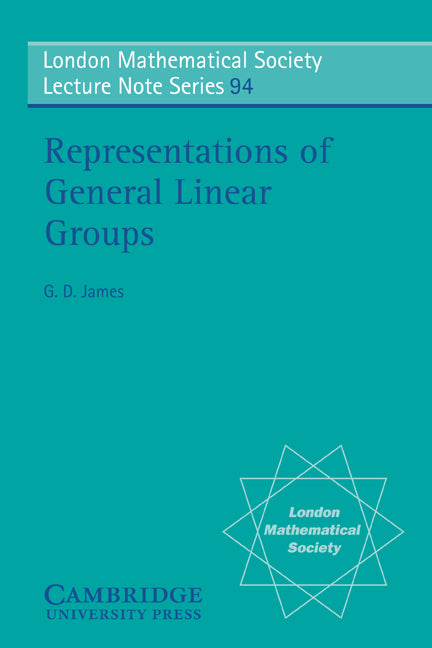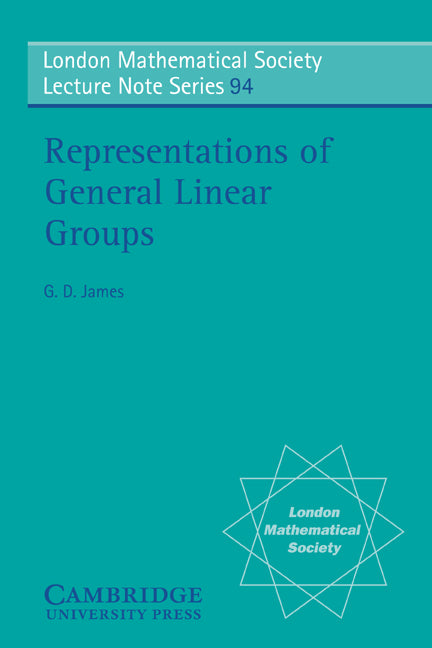Freshly Printed - allow 8 days lead
Couldn't load pickup availability
Representations of General Linear Groups
This book examines the representation theory of the general linear groups, and reveals that there is a close analogy with that of the symmetric groups.
G. D. James (Author)
9780521269810, Cambridge University Press
Paperback, published 24 May 1984
160 pages
22.9 x 15.2 x 0.9 cm, 0.24 kg
The most important examples of finite groups are the group of permutations of a set of n objects, known as the symmetric group, and the group of non-singular n-by-n matrices over a finite field, which is called the general linear group. This book examines the representation theory of the general linear groups, and reveals that there is a close analogy with that of the symmetric groups. It consists of an essay which was joint winner of the Cambridge University Adams Prize 1981-2, and is intended to be accessible to mathematicians with no previous specialist knowledge of the topics involved. Many people have studied the representations of general linear groups over fields of the natural characteristic, but this volume explores new territory by considering the case where the characteristic of the ground field is not the natural one. Not only are the results in the book elegant and interesting in their own right, but they suggest many lines for further investigation.
Abstract
List of symbols
1. Introduction
2. Examples
3. Gaussian polynomials
4. Compositions of n
5. Root subgroups of Gn
6. Subgroups of Gn associated with compositions
7. Coset representatives
8. Subgroups of Gn used for induction
9. Some idempotent elements of KGn
10. The permutation module M?
11. The Submodule Theorem
12. A lower bound for the dimension of S?
13. The Kernel Intersection Theorem for S(n-m,m)
14. Reordering the parts of ?
15. The Kernel Intersection Theorem
16. Consequences of the Kernel Intersection Theorem
17. Removing the first column from [?]
18. Isotropic spaces
19. The prime divisors of Gaussian polynomials
20. The composition factors of S(n-m,m)
Acknowledgements
References.
Subject Areas: Algebra [PBF]


